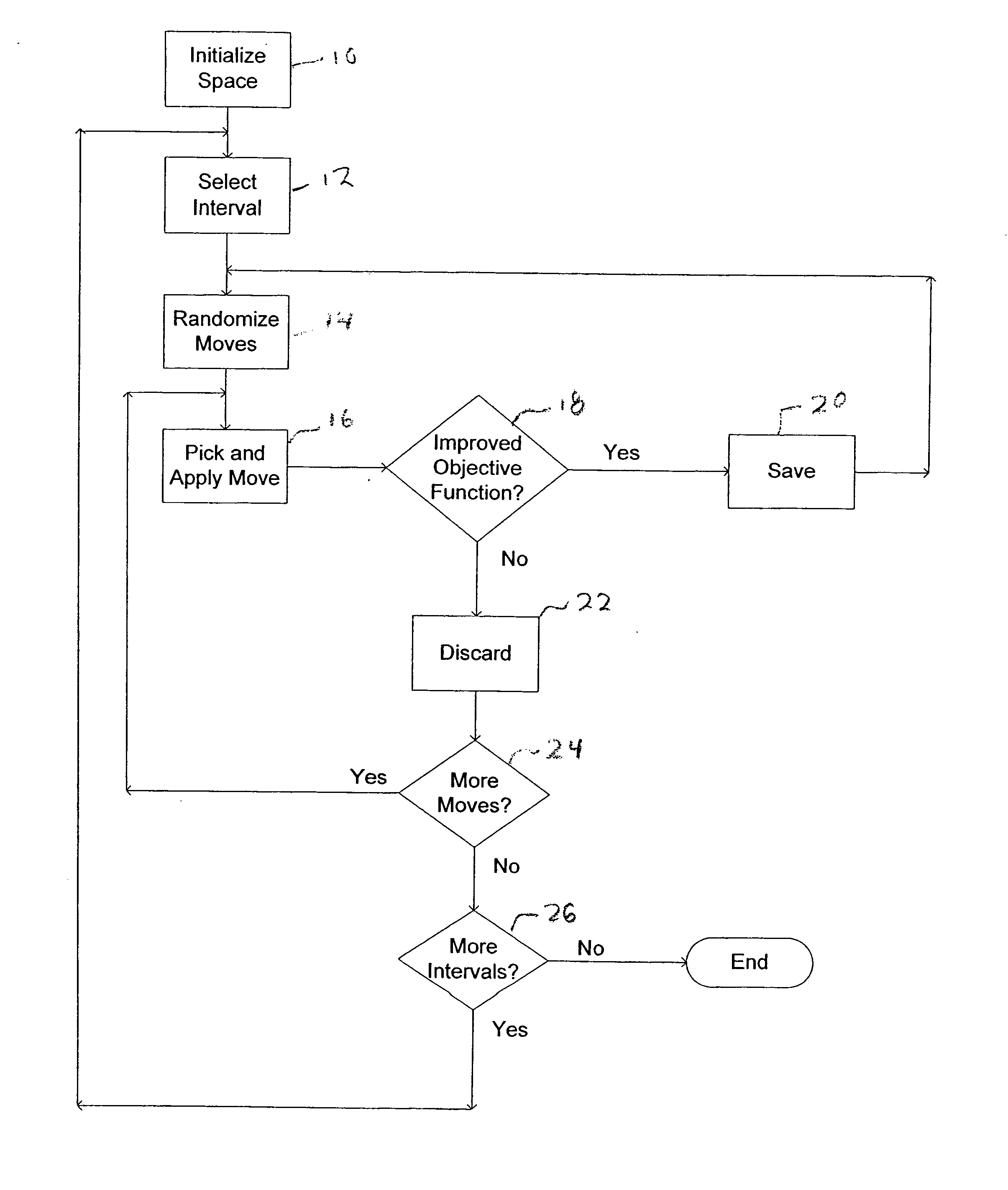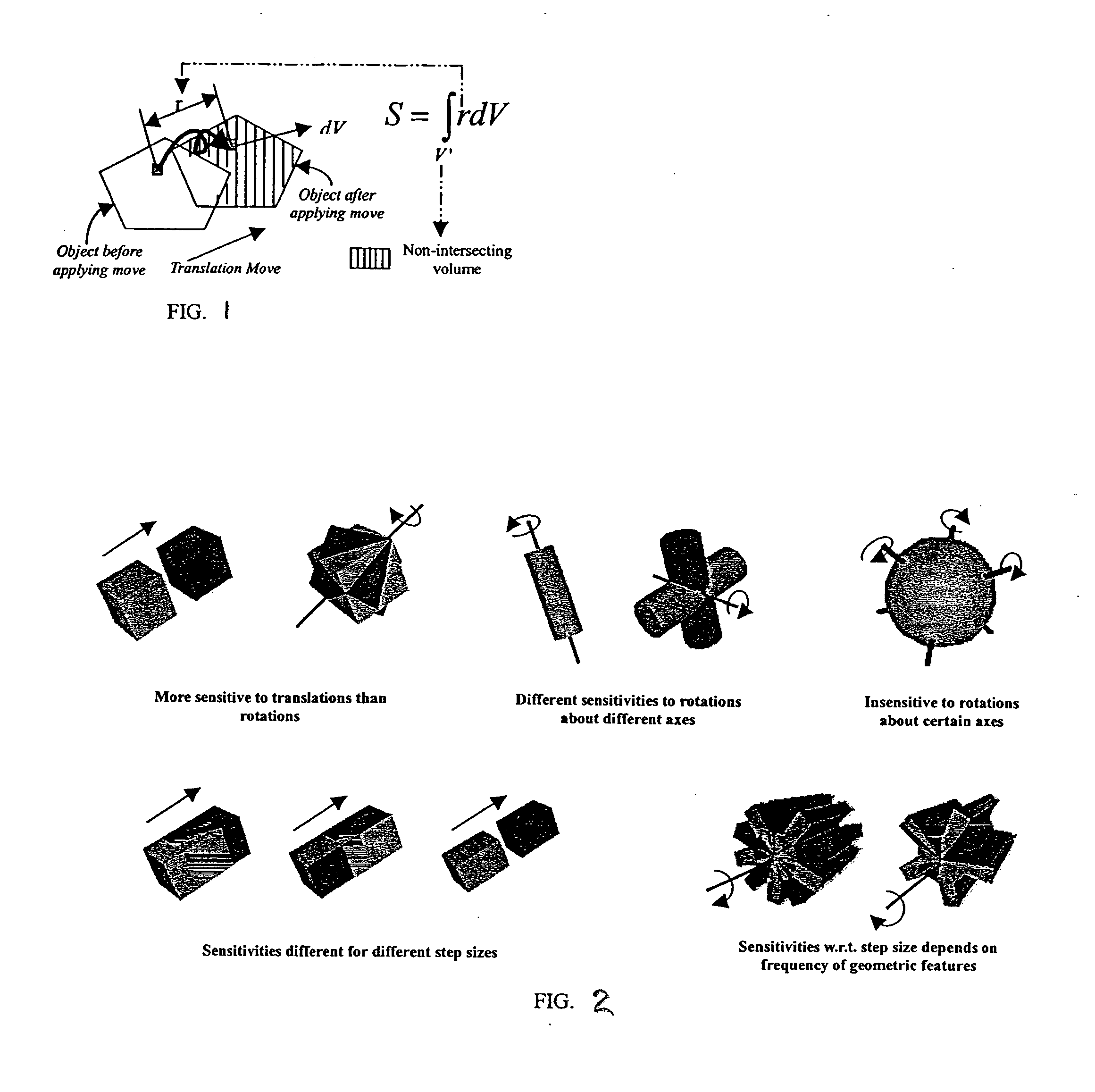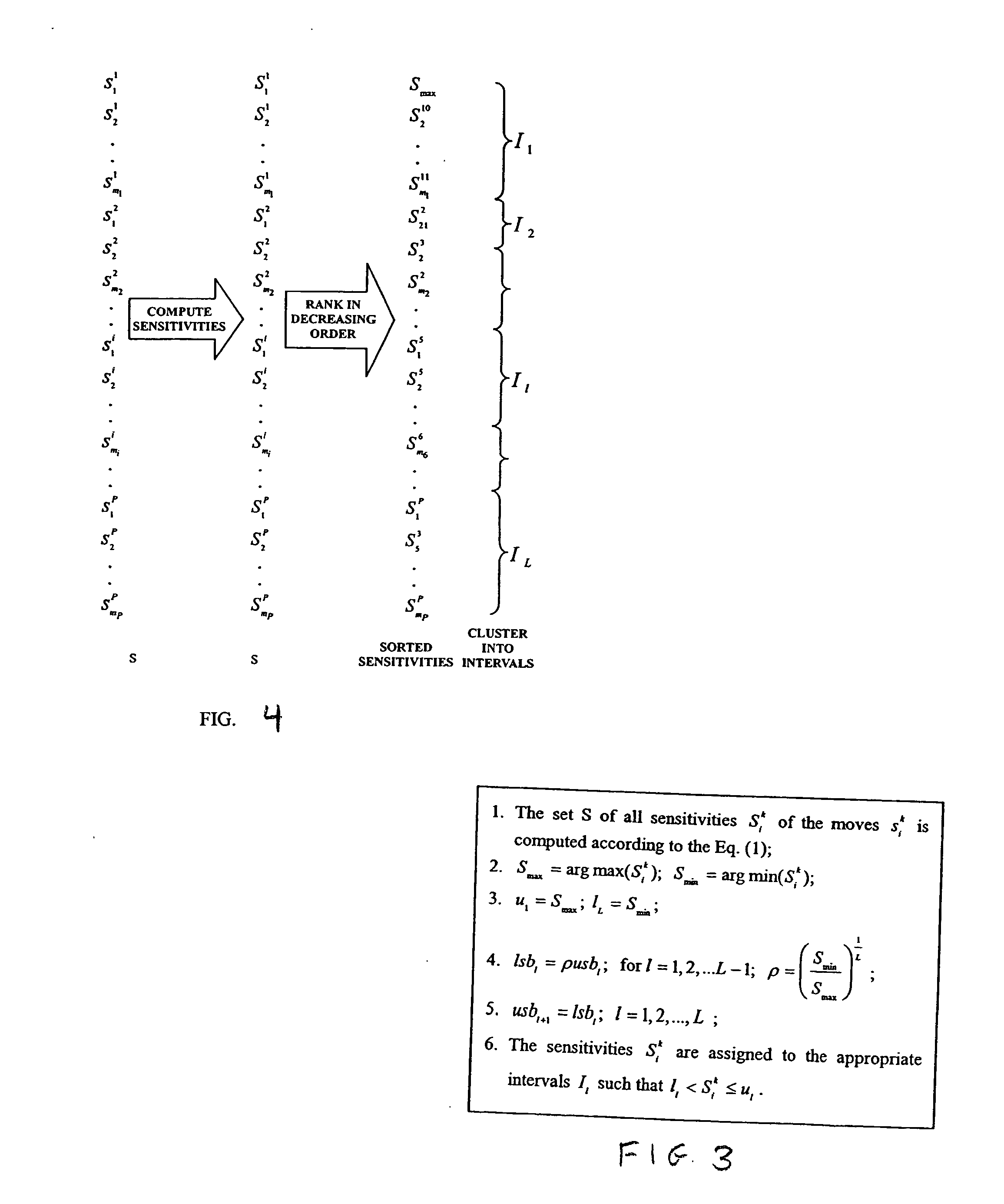Pattern search algorithm for component layout
a component layout and pattern search technology, applied in the field of pattern search techniques, can solve the problems of not having very many practical applications, difficult to find a layout with zero intersection and protrusion, and not being the best way to satisfy spatial constraints
- Summary
- Abstract
- Description
- Claims
- Application Information
AI Technical Summary
Benefits of technology
Problems solved by technology
Method used
Image
Examples
example 1
[0091] Packing three big cubes, three small cubes, three rods, three plates, three gears, and three small spheres into a large sphere.
example 2
[0092] Packing standard (SAE) luggage pieces into the trunk of a car.
example 3
[0093] Eighteen gears packed into a cubic container. The container is sized such that the gears can all fit into the container only if their teeth intermesh.
[0094] All the three examples were tested 25 times with both the previous algorithm (EPS) and the new algorithm (SPS). Each test included three runs of the respective algorithm and the best of the three solutions was chosen. Each run started from a random initial configuration. I(x1, x2, . . . , xn) was evaluated at the sixth level of octree resolution. The number of steps per pattern was 100, i.e., mi=100 for all i.
[0095] The averages of the 25 runs are presented in Table 1. From the table, it can be seen that the SPS algorithm required fewer iterations to reach a similar objective function value in all the three examples. The time taken for the preprocessing is negligible (about 1%) compared to the time taken by the search algorithm in SPS.
TABLE 1EPSSPSEPS-SPSEPS×100Obj. Fn.*#It-Obj. Fn.*#It-Obj.#It-(%)$erations(%)$eration...
PUM
 Login to View More
Login to View More Abstract
Description
Claims
Application Information
 Login to View More
Login to View More - R&D
- Intellectual Property
- Life Sciences
- Materials
- Tech Scout
- Unparalleled Data Quality
- Higher Quality Content
- 60% Fewer Hallucinations
Browse by: Latest US Patents, China's latest patents, Technical Efficacy Thesaurus, Application Domain, Technology Topic, Popular Technical Reports.
© 2025 PatSnap. All rights reserved.Legal|Privacy policy|Modern Slavery Act Transparency Statement|Sitemap|About US| Contact US: help@patsnap.com



